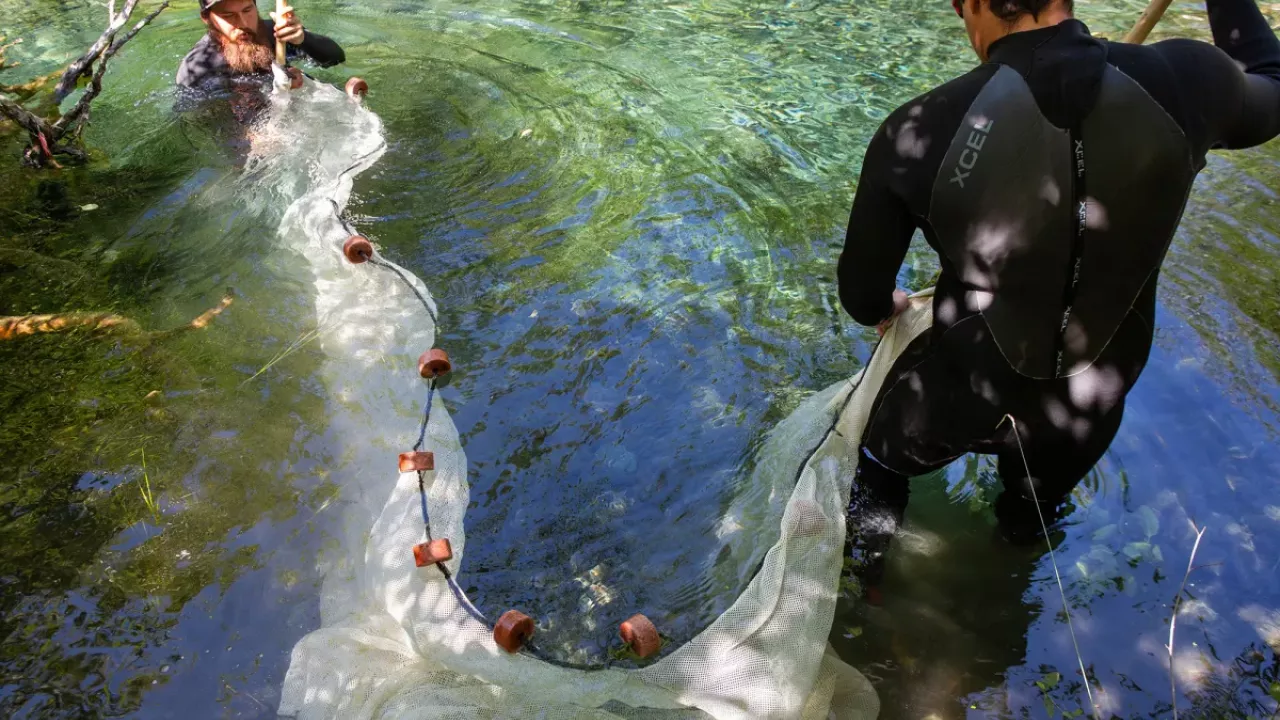
The World’s Largest Dam Demolition Has Begun. Can the Dammed Klamath River Finally Find Salvation?
"Oshun O’Rourke waded into the dark green water, splashing toward a net that her colleagues gently closed around a cluster of finger-length fish.
The Klamath River is wide and still here, making its final turn north to the coast as it winds through the Yurok reservation in Humboldt County. About 150 baby chinook salmon, on their long journey to the Pacific, were resting in cool waters that poured down from the forest.
O’Rourke’s colleagues hoisted the net into a mesh-sided bin in the shallows to sort through their catch, in search of young chinook to test for a parasite that can rot fish from the inside.
Two years ago, during a deepening drought, most salmon captured for testing during peak migration were infected with the lethal parasite. One tribal leader called it “an absolute worst-case scenario” for the Yurok, who rely on salmon for their food, culture and economy.
O’Rourke and fisheries biologist Leanne Knutson laid out 20 small dead fish on paper towels, then wrapped them in plastic to send to a lab that will check for the parasite. The rest were released back into the river, where they will swim for days to reach the ocean."
